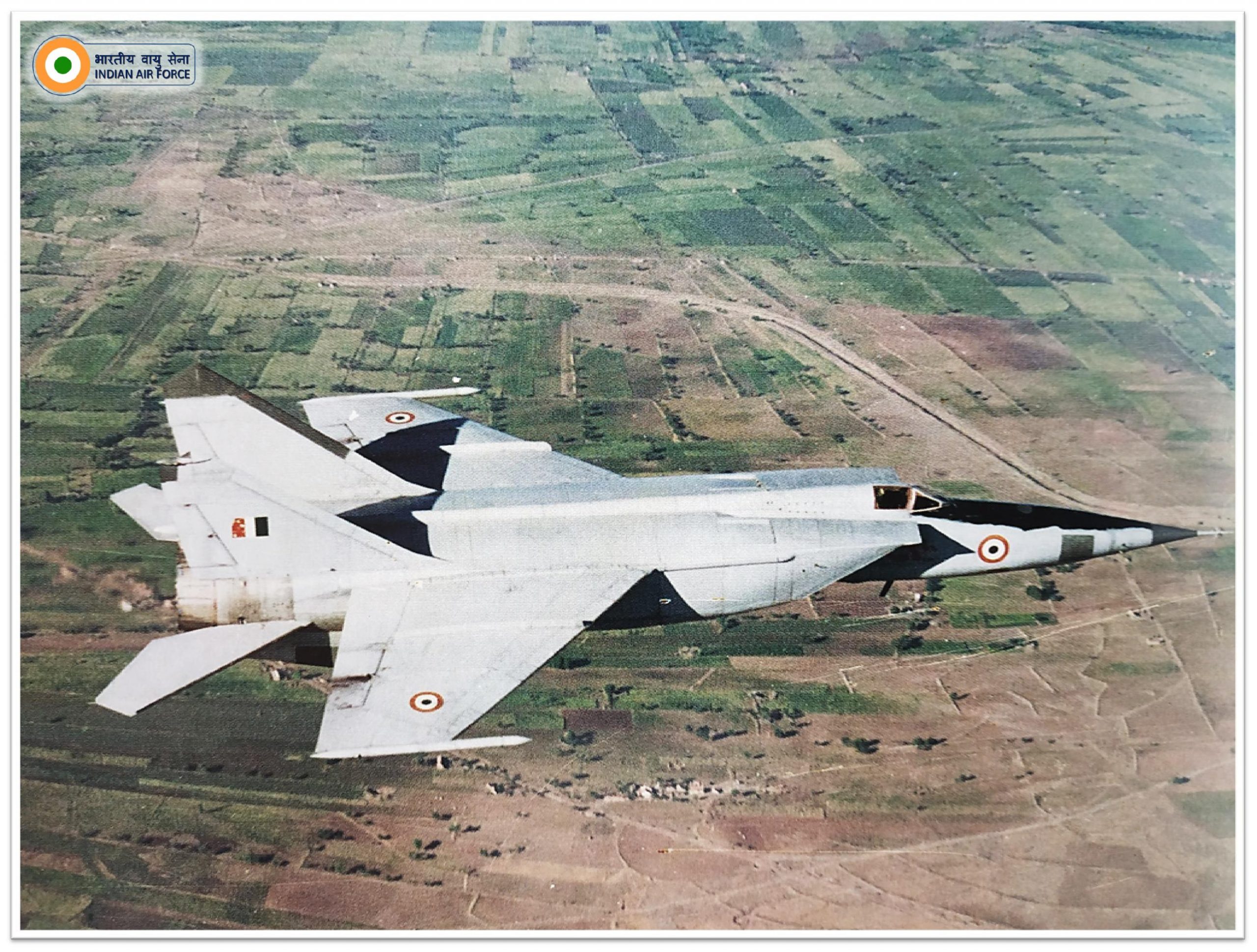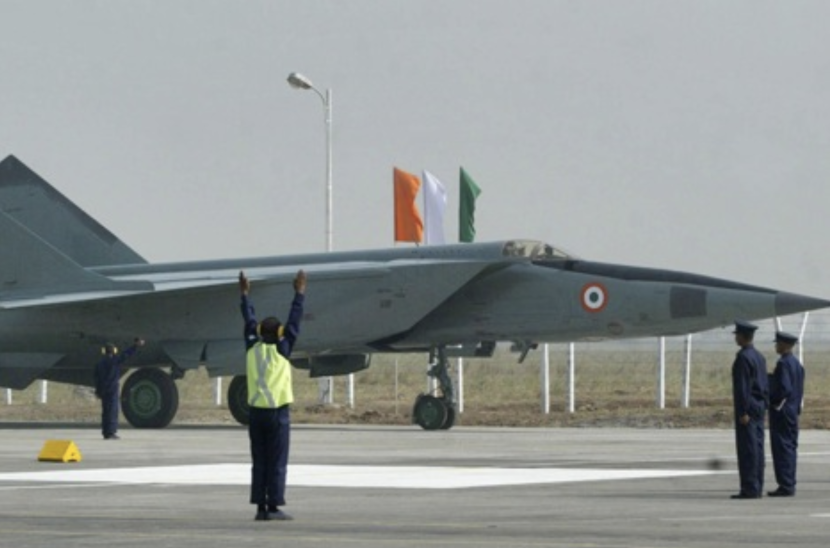As the Indian Air Force (IAF) celebrated its 89th anniversary, there have been many glorious chapters written in its history, like the battle of Longewala during the 1971 war or even the daring Balakot strike of 2019.
Ominous Signs For China? After 75 Years, Japan Operates Powerful Fighter Jets From Its Naval Carrier
But an equally glorious, intriguing, and daring mission happened 24 years ago when an IAF reconnaissance aircraft made its presence heard over Islamabad, the capital of neighboring Pakistan, by unleashing a sonic boom in broad daylight.
The aircraft, a MiG-25, was the world’s fastest combat aircraft capable of flying at a top speed of more than Mach 3.2 or more than three times the speed of sound. However, in the interest of preserving its engines, its speed was limited to Mach 2.83, which is still incredibly fast and no aircraft in existence can come close to match that speed.

The MiG-25 was designed by the erstwhile Soviet Union to counter the B-70 Valkyrie being developed by the United States as a Mach 3 strategic bomber.
Though the Valkyrie program was canceled, the development of the MiG-25 continued and it entered service in 1970 as a frontline interceptor capable of shooting down high-flying US Air Force bombers trying to enter Soviet territory.
Because of its capability of flying fast and high, a reconnaissance version of the MiG-25 was also developed.
IAF’s ‘Trisonics’
Soviet Union’s offer of selling MiG-25 to India in 1980 was excepted without much hesitation, because in those pre-satellite days, IAF needed an aircraft, which could fly high enough to not only see into hostile neighbors’ territory but also had the speed to fly in and out without being bothered by the enemy’s interceptors or surface-to-air missiles.
AUKUS Alliance Highly-Beneficial For India; Aimed To Counter-Challenge China In The Indo-Pacific: Think Tank
Starting 1981, IAF MiG-25Rs from the 102 “Trisonics” squadron regularly flew missions over the next two decades not only along the India-Pakistan border with their cameras peeking hundreds of miles inside Pakistan, clicking pictures of vital installations and military formations, but also entered Pakistani air space unchallenged to undertake photo-recce missions.
Even China was not spared, as the MiG-25Rs flew over Chinese territory collecting vital information.

An embarrassed Pakistan spotted the jet on its radars but was helpless as it didn’t have anything in its arsenal to shoot the aircraft down.
At the time, the top-of-the-line fighter in Pakistan Air Force was the F-16, which had a top speed of around Mach 2 while its service ceiling was 50,000 feet. In comparison, the MiG-25R flew regularly at Mach 2.8 and had a cruising altitude of 74,000 feet.
MiG-25 Over Islamabad
The most talked-about mission undertaken by the mighty MiG happened in May 1997. On a clear sunny day in Islamabad, people were shocked when a loud sonic boom reverberated through the city shaking doors and windows.
Pakistan military radars caught the intruding aircraft on their scopes streaking towards Indian airspace. F-16s were ordered to scramble and try and take it down.
Rafale Jets Outfitted With Storm Shadow Missiles Add Lethal Punch To Indian Air Force’s Deep Strike Capabilities
But as the mysterious aircraft was flying at over twice the speed of sound and at an altitude of close to 70,000 feet, the F-16 gave up the chase as catching it was beyond the limit of its performance.

Pakistan lodged a strong protest with India and alleged that the MiG-25R was photographing vital installations around its capital city. India denied it was their plane.
“Yes, Mig-25 could do it. Till the late 50s, IAF used Canberras for photo-reconnaissance in Pakistan territory. But when PAF Sabres shot down a Canberra, IAF stopped all flights,” said Lt. Gen. H.S. Panag (retd), former General Officer Commanding-in-Chief, Northern Command and Central Command, Indian Army.
The EurAsian Times reached out to IAF veterans for comments, however, they refused to come on record as IAF has always officially denied the incident having taken place.
Pakistan Demoralized
Then why did the pilot of the MiG-25R decide to make his presence felt over Islamabad? According to experts, it was done deliberately to assert IAF’s superiority over PAF and rub in the fact that an Indian plane could enter Pakistan airspace at place and time of their choosing, with the PAF not being able to do anything about it.
Pakistan’s Nemesis Su-30MKI Fighter Jets Of Indian Air Force To Hold Mega Drills In Kashmir
Even an air force as accomplished and capable as the Israeli Air Force had a tough time dealing with Arab MiG-25s which regularly flew over their country on photo-reconnaissance missions in the 1970s.

In one instance, long-range sensors placed on Mount Hermon picked up a MiG-25 jet warming its engines prior to takeoff from the Damascus airbase in Syria. The Israelis scrambled an F-4 Phantom and positioned it to intercept the MiG with sparrow air-to-air missiles as it entered Israeli airspace.
But when the MiG arrived, it was at 80,000 feet and going at an incredible Mach 3.2. Needless to say, the Phantom gave it no trouble whatsoever.
A Glorious Chapter Ends
The MiG-25Rs flew for nine more years in IAF service, including during the 1999 Kargil, where they played a vital role in photographing Pakistani support bases in the Gilgit-Baltistan area.
The jets were retired in 2006, after 25 years of glorious service. Their role was taken over by spy satellites and unmanned aerial vehicles.
MiG-21 Fighter Jet Engines Mounted On T-34 Tanks Fought And Won A Completely Different War In Middle-East
The MiG-25 was probably the only aircraft in the history of the Indian Air Force which had no equal in the region. It flew missions over both Pakistan and China without fear of interception or being shot down.
No aircraft in IAF’s present inventory, including the Rafale and Sukhoi Su-30, can do what the MiG-25 did during its service, return unscathed after successfully accomplishing its mission over enemy territory in broad daylight and letting the enemy know it was there.
- Ramandeep Singh Bajwa is a senior defense journalist who has worked in both online and print media. He keenly follows the defense domain and has a special interest in combat aircraft. He can be reached at: bajwa.rs@gmail.com
- Follow EurAsian Times on Google News




